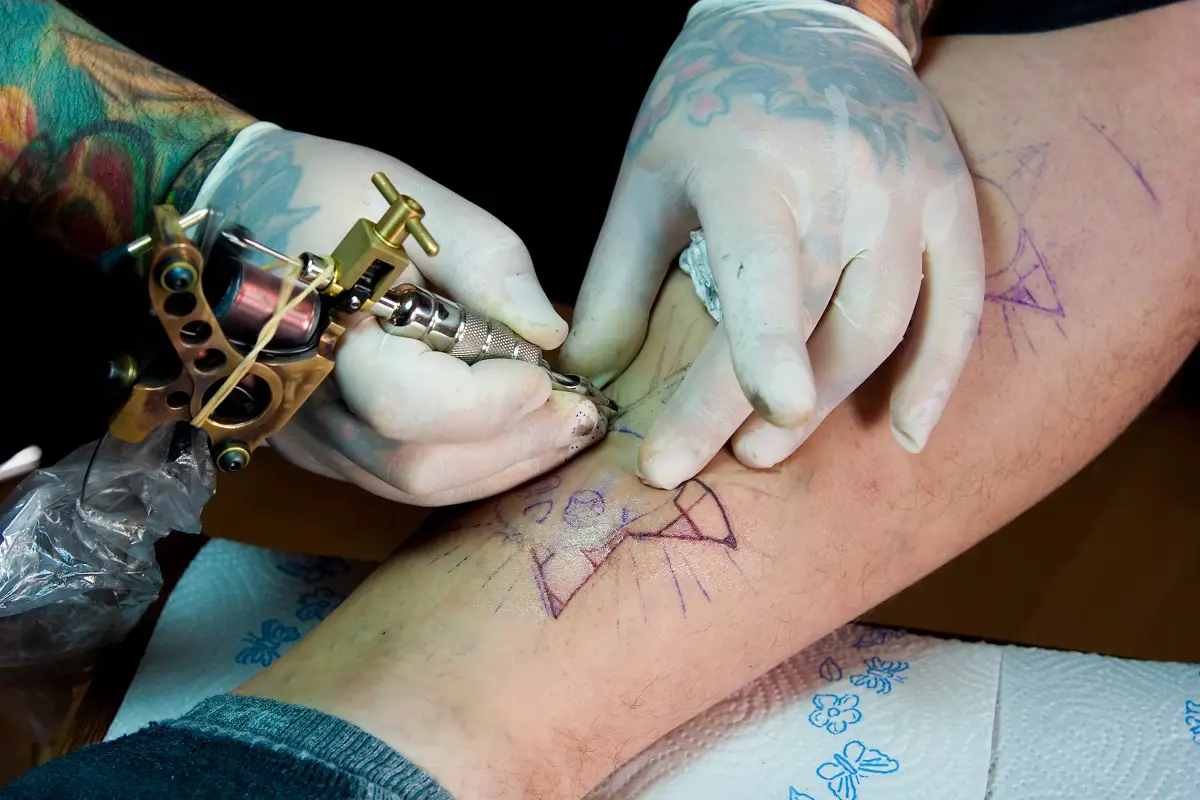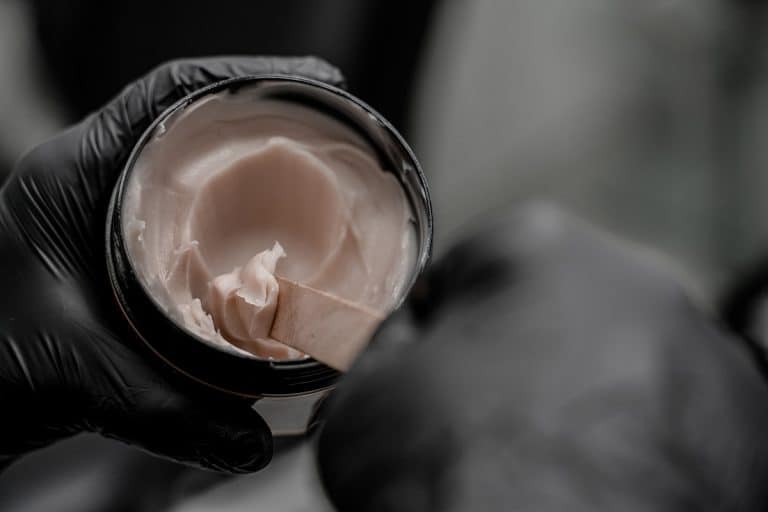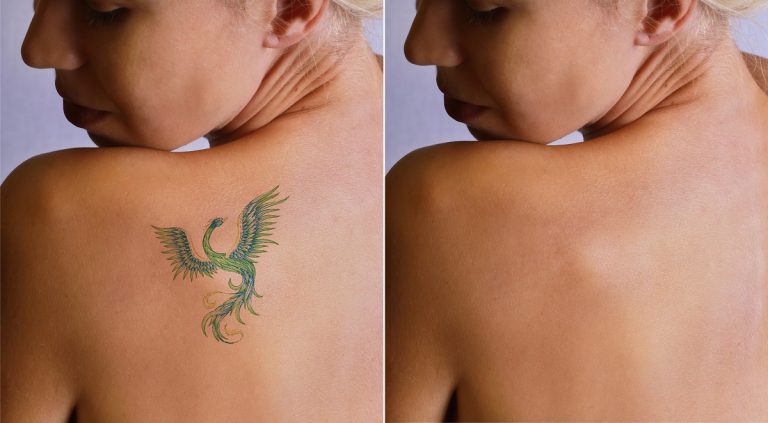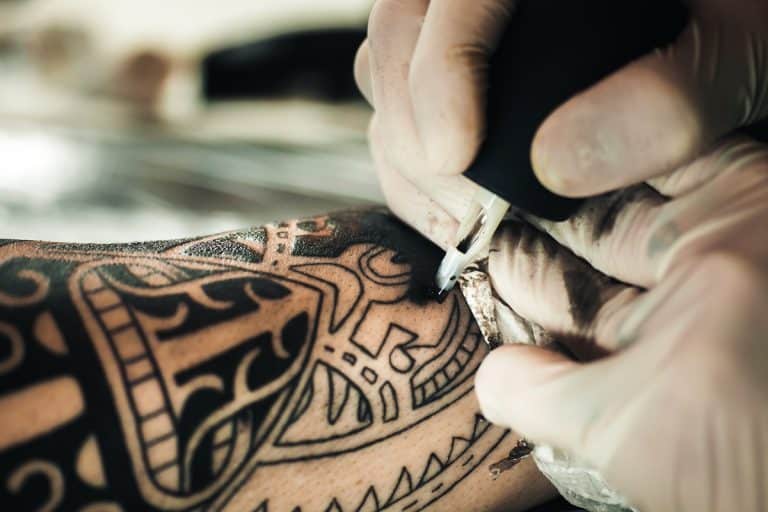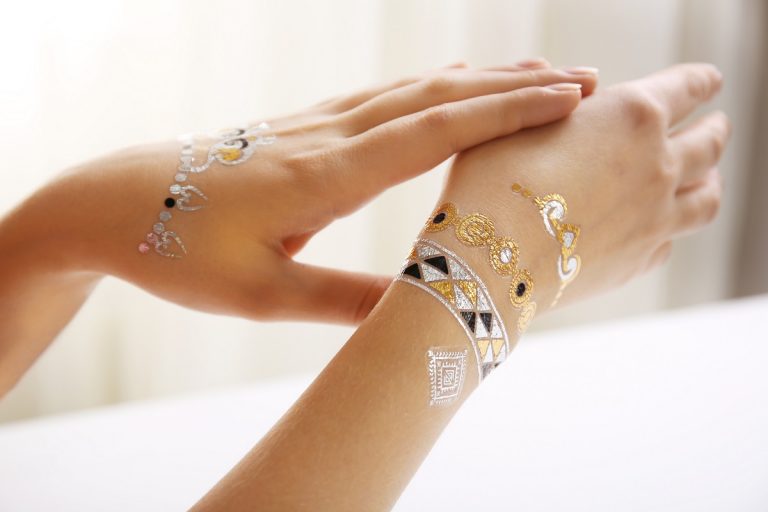Can A Tattoo Cause Nerve Damage?
Getting a tattoo is a pretty risky process if you think about it. A lot can go wrong, but tattoo side effects are pretty rare. However, one cannot help but wonder; alongside all of the things that can go wrong, is nerve damage a thing when getting tattooed, or is it just some rumor circling to scare us into not getting inked?
It is well known that tattoos hurt. But, tattoos hurt more when they’re done somewhere on the body where the skin is thin, soft and there are a lot of nerve endings. Such circumstance makes it pretty painful to get tattooed; thin skin means that the tattoo needle reaches the nerves closely and even directly, so the brain perceives this kind of pain more intensely. Such areas include ankles, shinbones, fingers, private parts, the front of the neck, the face, feet, etc.
But, when one gets tattooed in such an area, or overall, does the needle actually cause nerve damage? Is that the real reason why tattoos hurt? Does the needle just keep repeatedly damage the nerves and we didn’t even think about that?
Well, if this is something you’ve been thinking about, you’re at the right place. In the following paragraphs we’ll talk about tattoos and nerve damage, whether this is possible and how often does it occur. So, without further ado, let’s get right into it!
Nerve Damage – Explained
What Is Nerve Damage?
In order to understand the relation between a tattoo needle and the nerves during the tattooing process, we first need to take a look at what nerve damage really is.
Nerves are responsible for ensuring that impulses travel to the brain in order to function. Because of this, you react to different temperatures, touches, sensations, pain, you can feel the wind or the rain, etc.
When a nerve gets damaged, the nerve is generally cut by some external injury, so the affected area loses feeling or movement. However, this is a serious injury; tattooing doesn’t belong in this category. This kind of nerve damage is known as third-degree nerve damage, where the nerves are severely injured, require surgery, and have a smaller chance of recovery.
Now, when it comes to small or moderate nerve damage, there is generally pain. Now, pain is good in this case because it shows that the nerves are not cut; they still function. But, the pain also indicates that the nerves are compressed, stretched, exposed to temperature changes, etc. This is considered to be first-degree nerve damage. This kind of pain causes discomfort, but the nerves can recover easily, and everything’s good and well in no time.
How Does Nerve Damage Occur?
Different degrees of nerve damage occur differently. For example, one can get in a serious accident and get injured, or one can fall during a sports activity and compress or stretch the nerves, causing them to crush, or cut.
Nerve damage can also be caused or triggered by a disease. For example, autoimmune diseases like lupus, diabetes, carpal tunnel syndrome, Sjorgen’s syndrome, or rheumatoid arthritis can also cause nerve damage.
How Does Nerve Damage Feel?
Nerve damage generally manifests as numbness in the area where the nerves were damaged, as well as muscle weakness. Also, tingling sensations occur in hands and feet, alongside the feeling that something is compressing the area like you’re wearing a tight sock or a glove. These are general warning signs that you should see a doctor and address the issue, especially if you’re not dealing with an actual injury.
Do Damaged Nerves Heal?
Generally speaking, there are three degrees of nerve damage. The slightest nerve damage is considered first degree, while the worst nerve damage is the third degree. It is important to mention that nerve damage at any degree can expect healing at one point. Unless there is some serious, life-threatening situation, injury, and nerve damage, thanks to surgeries, nerves can recover and regrow if they were cut.
It takes a nerve 6 to 12 weeks to recover and regrow. Nerves grow at a rate of 1mm per day. The aftermath of nerve damage might take a month for the remains of the injury to heal. So, in the worst-case scenario, you can expect 2 to 3 months of recovery time.
Nerve Damage and Tattoos
Tattooing and Skin
Now, to understand the probability of tattoo needles causing nerve damage, we need to understand how tattooing actually works?
A tattoo needle creates a vacuum in the dermis layer of the skin where it then transfers the ink. This process occurs incredibly quickly since a needle penetrates the skin at a rate of 3000 times per minute at its fastest.
The epidermis is the outer skin layer or the skin surface. The dermis is the inner skin layer, where most of the nerve tissue is placed. The nerve tissue supplies the skin and expands the receptors, which make sure you sense and feel things, like pain during tattooing.
So, the fact that the tattoo needle penetrates into the dermis to transfer the ink would logically imply that there could be some kind of nerve damage going on. However, we must emphasize that professional tattoo artists who use high-end tools never actually allow the needle to go into the depth of the dermis, or beyond it.
If this does happen due to the artist’s lack of experience or mistakes, you’re going to experience a tattoo blowout; this means that the ink is placed under the dermis area, so the ink is not put in place and it starts to spread beyond the tattoo lines. This also implies that the tattooist has pressed too hard during tattooing.
So, Can Tattoos Cause a Nerve Damage?
Even though the tattoo needle does come in contact with the nerve endings, nerve damage during tattooing is extremely rare. However, as we mentioned, the deeper the needle goes into the skin, the higher the chance of nerve damage. This generally happens with inexperienced tattoo artists.
The chance of nerve damage also increases if you choose your tattoo to be placed somewhere sensitive. Areas, where the skin is thin and has a lot of nerve endings, can be high risk for nerve damage, especially with an inexperienced tattoo artist.
Such areas include;
- Feet and ankles
- Elbows and inside of the upper arm area
- Inside of the wrist
- Armpits
- Hangs and fingers
- The outer side of the shoulder
- Certain facial areas (eyes, lips, temples, etc.)
- Side of the calf and shinbone
- Behind the knees and knees
- Private parts
- Ribs
These areas have extremely thin skin and numerous nerve endings. They are also, conveniently, the most painful areas to get tattooed. So, if you do want a tattoo to be placed somewhere sensitive, make sure you get it done by an experienced professional. This way you minimize even the smallest risk of nerve damage or tattoo blowout.
Hands, feet, fingers, and toes have the highest chance of nerve damage, which generally manifests via painful and unpleasant spasms. So, if you do experience such spasms, alert the tattooist and ask them to alter their tattooing technique or get someone else to finish your tattoo.
Final Thoughts
Nerve damage caused by tattooing is extremely rare. This, of course, applies to cases where a tattoo is done by a high-end tattoo artist, who has years of experience and is highly professional. And, you should only get tattooed by such tattooists. To avoid nerve damage, and other unpleasant tattoo side effects (like infection, ink allergy, tattoo blowout, etc.), only go for the best tattoo artists in your area.
If you still think that nerve damage of some kind could occur, we recommend you avoid the aforementioned tattoo placements in highly sensitive areas. Because of the thin skin and numerous nerve endings, the chance of nerve damaged simply increases. So, to avoid the risk, go for areas with thicker skin, muscles, and fewer nerve endings, like the thighs, gluteus area, bicep, lower back, forearm, etc.
- Safe, non-toxic plant-based temporary tattoos made with 100% high-definition printing for a realistic look without the pain
- Easy to apply and remove - just stick for 20 seconds then take off
- Set includes 5 sheets with 17 fun, delicate designs like hearts, cats, smiles, suns, moons, and more
- Waterproof and long-lasting - stays on up to 2 weeks of wear
- Fashionable for women, men, girls and boys
- Place on arm, wrist, neck, leg, finger, waist, foot and more
- Great for parties, birthdays, and showing your unique style

